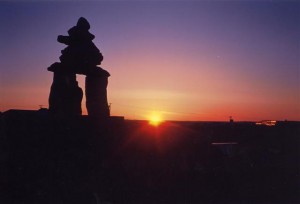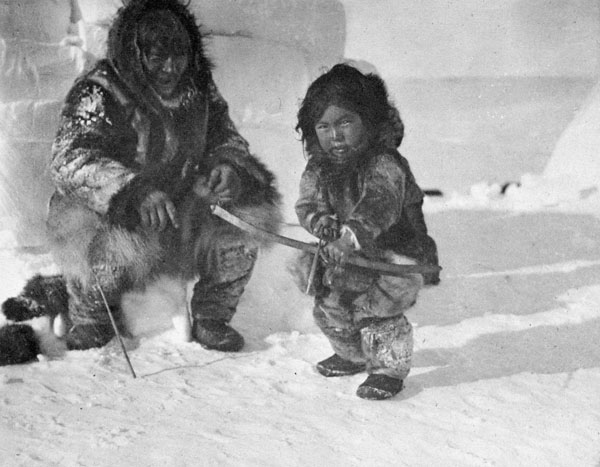MediaIndigena is a content aggregate blog (or, an “interactive media magazine”) that I have found useful throughout the past 13 weeks for keeping an ear to the ground on the myriad of topics that have been brought up through our discussions and readings. The site is authored by ten individuals with very different backgrounds and professions (of which you can read about by clicking their names), sort of like the ETEC521 research blog but hopefully not about to culminate it’s posting cycle! If you’re interested in keeping up with MediaIndigena, they’re also available via twitter and facebook, and, following those links you’re sure to snowball to other such blogs, websites, and organizations.
Tag Archives: archive
Native America Calling
Native America Calling (NAC) is a radio talk-show connecting traditional and internet radio stations and listeners in dialogue about Indigenous issues. Boasting an audience of approximately half a million listeners throughout Canada and the United States, each episode features experts and guests with callers with a stated goal of improving the lived reality of Native Americans.
The one-hour program airs live, five days a week, from 10-11 a.m. PST (or, 1-2 pm EST). You can listen to the program streaming online, or you can tune-in on your radio if you are in range. If you want to call in, the number is 1-800-99-NATIV. New topics are posted at the beginning of each week and you can also sign up to their mailing list to have topics delivered to you. You can also listen to the archive of past topics, ranging back over a decade, although the program hasn’t always been 5 days per week. The program is produced in Anchorage, Alaska, by the native owned/operated Koahnic Broadcast Corporation.
Nunavut Social History Database
http://nunavutsocialhistory.arts.ubc.ca/mainFrame.html
This website, created by UBC students and faculty, contains abstracts of archival documents dealing with the social history of the Canadian Arctic. The database covers one of the most interesting and heavily documented periods in the history of the Canadian Arctic: a period when Inuit moved from traditional hunting camps to settlements. It can be argued that this movement, commencing largely in the mid-1950s and lasting until the mid to late 1960s, is unique in terms of the international history of Aboriginal people. The documents that are abstracted in this collection are from a limited number of archival collections that have very extensive records. The database contains over 10,000 entries. The limitation of this database, however, is that it contains only abstracts of documents. It does not contain the full texts of any documents – these being the property of the archive in question. Readers wishing to see the complete record or obtain copies of these documents are referred to the archive from which the record is taken.
CBC Digital Archives
CBC has a fantastic archives site called CBC Digital Archives. This site has something for everyone and contains both television and radio archives going back many years. It is interesting to note that two of the three most popular clips are about aboriginal issues: the Oka stand-off in 1990 (with a rather young looking Peter Mansbridge) and piece on survivors of the Residential school system from 1991. The third most popular video is Justin Trudeau’s eulogy for his father in 2000.
I did a bit of exploring in the archives under Society and Native Issues and focused on the history of the residential School system. It is interesting to see how Canadian Societal views about the Native residential school system changed over time as expressed through the CBC media. The earliest clip called “A New Future” is from 1955 and presents a wonderful and cheery perspective of residential schools as a feature to salute “Education Week”. It is definitely biased as the well dressed, cheery, anglicized Indians never stopped smiling – a must to see to understand how residential schools were justified and understood at the time.
Fast forward to 1969 for the video Government takes over schools to see when the federal government took over the residential schools from the churches. This clip also shows a huge change in attitude and understanding of the residential school. This clip and the 1970 the clip “Losing Native Languages” shows recognition that isolating aboriginals from their culture was not such a good idea after all. The cover picture for this radio broadcast is from the 1955 “A New Future” video from 1955. The videos then progress towards the present as the abuses of the aboriginal students were recognized: Native Leader charges church with abuse (1990) to the official apology’s from the Canadian Government including: We are deeply Sorry (1998) and A long-awaited Apology (2008). There is also an interesting clip from 1974 showing a day in the life of the Indian Affairs Minister: Jean Chretien (former Prime Minister of Canada)
This is a great site to find out about Canadian Aboriginal issues both past and present.
Library & Archives Canada
Library and Archives Canada has a searchable database of historical government and private works, both published and non-published, for you to explore. Looking at the “archives” section will bring up photos and and documents often viewable online. The institution was brought together through federal legislation in 2004, tying together the National Library of Canada and the National Archives of Canada. They are mandated to provide a wealth of information and memory accessible to all Canadians. As one would expect, their collection is broad and could be of interest to many avenues of research. They do have a specific section on Aboriginal Peoples including databases, research aids, and virtual exhibitions.
First Voices – nłeʔkepmxcin
I realize First Voices has already been introduced but this section of the site is specific to my region. The nłeʔkepmxcin Community Portal deals with the language of the people of the Nicola Valley in British Columbia. This section (similar to other language an people group sections in First Voices) serves as a language, historical and cultural archive for this region. To help students learn basic terms and phrases there are games and vocabulary lists available. These vocabulary lists include audio archives to help with how to pronounce the word. This archive is driven by Aboriginal contributors in an effort of cultural preservation.

